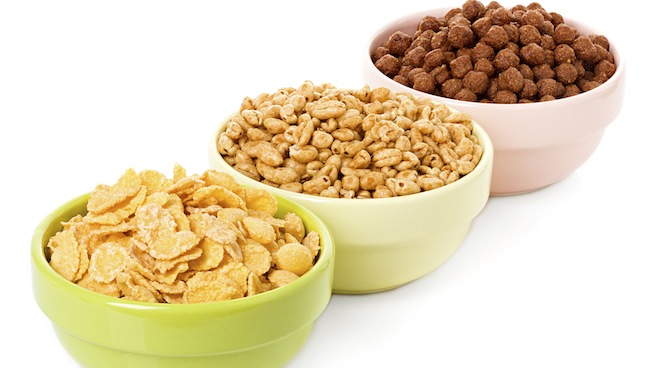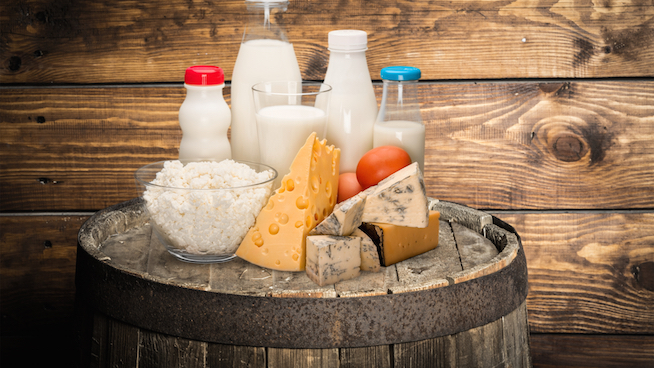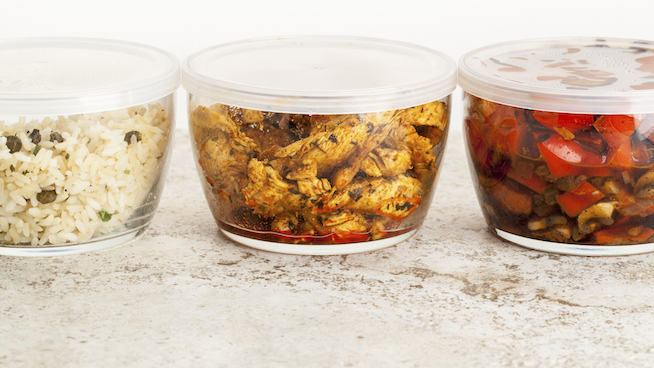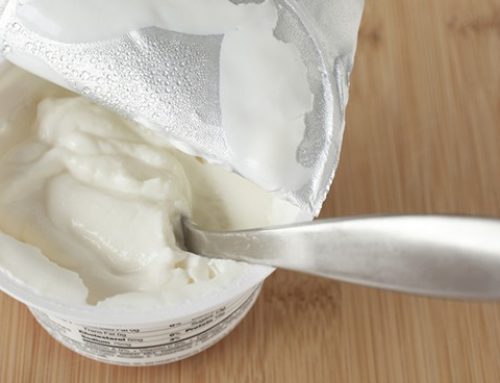5 Foods That Are Stunningly High in Sodium
Although sodium is an essential nutrient—your body needs it to survive—it’s also incredibly easy to overindulge on the stuff. In fact, studies show that 9 in 10 Americans consume too much sodium.
Doing so carries serious risks. Over-consuming sodium can lead to high blood pressure, heart failure, stroke and a wide range of other issues. Health officials estimate that if Americans lowered their daily sodium intake to the recommended range, it would prevent up to 92,000 deaths annually.
The recommended daily level of sodium intake is 1,500 mg—about the amount you’ll find in 2/3rds of a teaspoon of table salt. (Note: While many equate salt with sodium, sodium is in fact a component of salt. Table salt is about 40 percent sodium; the rest is chloride.) Although athletes who work out at a high intensity for several hours a day can get away with eating more, people who work out only moderately (for an hour or less per day) typically don’t sweat enough to warrant a high-sodium diet. According to estimates, the average American consumes 3,400 mg of sodium a day—more than twice the recommended value.
The excess doesn’t come from people being heavy-handed with their salt shakers. Between 75 and 90 percent of the sodium Americans consume comes from processed foods. A ton of food items—including ones you’d never expect—are startlingly high in sodium. Here are five of the worst offenders.
Canned Soup
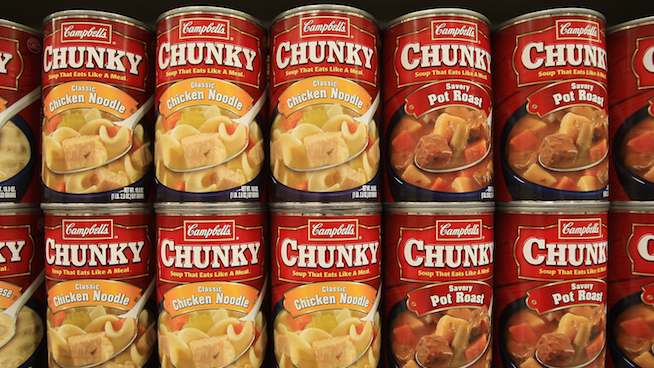
All photos: Thinkstock
Many canned soups pack more than 800 mg of sodium per serving. When you consider that in most cases a single can contains two or three servings, it’s easy to see how the amount of sodium people consume while eating soup can quickly skyrocket. Place your lunchtime soup in a hearty bread bowl, and your sodium count can easily exceed 2,000 mg. You’ll have blown your entire day’s worth of sodium, and it’s barely past noon.
If you love soup, you don’t have to give it up. Just look for offerings marked “low-sodium,” or try making your own with a low-sodium broth and sodium-smart toppings such as potatoes, tomatoes, lentils and squash.
Deli Meats
Unfortunately, that classic cold cut sandwich is another lunchtime favorite that serves up lots of sodium. Most varieties of deli meats like salami, bologna, turkey, ham and roast beef weigh in with between 500 and 600 mg per serving—roughly a quarter of the recommended daily allowance for just the meat in a single sandwich.
At restaurants, the sodium in sandwiches can shoot up quickly. A popular sandwich that puts three monster servings of meat on a bun has a total sodium count of 2,690 mg—the equivalent of about 164 tortilla chips.
Instead of slapping on the cold cuts, grill up some lean chicken or fish for your next sandwich. A PB&J made with natural peanut butter and jelly is also a smart low-sodium option.
RELATED: 9 Athlete-Approved Peanut Butter Sandwiches
Breakfast Cereal
Mom always told you to watch out for sugary cereals. But the sodium content in many breakfast bowls is surprisingly high too. And not just in the obvious, colorful, kid-centric cereals with funny mascots. Many “healthy” cereals marketed to adults are crawling with just as much (if not more) sodium.
Making matters worse, most cereals aren’t realistic about their serving sizes. A typical box of cereal lists its serving size as less than a cup, when most people eat much more than that during a sitting. A report from the Environmental Working Group found that the average American eats at least 30 percent more than the standard serving size of cereals, and 10 percent of Americans eat more than 2.5 times the standard serving.
When a cereal’s suggested serving size is a mere 1/2 cup, its nutrition facts don’t look too bad. But double that size for a more realistic (albeit still conservative) serving, and suddenly you’re looking at 540 mg of sodium before you even add the milk. (Yes, there’s sodium in milk, too.)
Many cereal varieties (notably bran) are high in sodium, so check those labels, or opt for a low-sodium breakfast option such as greek yogurt.
Finally, be careful with your breakfast beverages. A single serving of vegetable juice packs an additional 481 mg of sodium. If you must have a glass with your bowl, opt for a “low-sodium” version.
Condiments
Ketchup has 160 mg of sodium in a single serving, so adding it to those salty French fries makes your meal go from bad to worse. Barbecue sauce is also sneakily high in sodium, containing roughly 400 mg per serving. And keep in mind, when most of us have ketchup or BBQ sauce with a meal, we consume more than one serving.
Another sodium-laden sandwich topper: pickles, which contain 300 mg per serving. But the worst salt offender among condiments is soy sauce. A single tablespoon contains 920 mg. Remember that the next time you dip your sushi into a bowl of the salty brown liquid.
RELATED: The 5 Worst Toppings We Put on Food
Frozen Foods
Frozen foods, much like canned soup, offer convenience at the price of a sky-high sodium count. A single serving of frozen pizza packs more than 900 mg, and that serving is laughably small—usually about 1/6 of the total pie. That means if you eat half of the pizza, you’re taking in roughly 3,000 mg of sodium. Yikes.
Frozen meals and TV dinners are among the worst nutritional choices. They often contain at least 1,800 mg of sodium, along with a slew of other nefarious nutritional items. It may not be as easy or convenient, but try making your own meals from scratch—ideally using organic ingredients—as often as you can. You will not only cut down on sodium, you will have more nutritious foods overall—and you’ll feel better in the long run.
Avoid frozen food with these eight 10-minute dinners.
RECOMMENDED FOR YOU
MOST POPULAR
5 Foods That Are Stunningly High in Sodium
Although sodium is an essential nutrient—your body needs it to survive—it’s also incredibly easy to overindulge on the stuff. In fact, studies show that 9 in 10 Americans consume too much sodium.
Doing so carries serious risks. Over-consuming sodium can lead to high blood pressure, heart failure, stroke and a wide range of other issues. Health officials estimate that if Americans lowered their daily sodium intake to the recommended range, it would prevent up to 92,000 deaths annually.
The recommended daily level of sodium intake is 1,500 mg—about the amount you’ll find in 2/3rds of a teaspoon of table salt. (Note: While many equate salt with sodium, sodium is in fact a component of salt. Table salt is about 40 percent sodium; the rest is chloride.) Although athletes who work out at a high intensity for several hours a day can get away with eating more, people who work out only moderately (for an hour or less per day) typically don’t sweat enough to warrant a high-sodium diet. According to estimates, the average American consumes 3,400 mg of sodium a day—more than twice the recommended value.
The excess doesn’t come from people being heavy-handed with their salt shakers. Between 75 and 90 percent of the sodium Americans consume comes from processed foods. A ton of food items—including ones you’d never expect—are startlingly high in sodium. Here are five of the worst offenders.
Canned Soup

All photos: Thinkstock
Many canned soups pack more than 800 mg of sodium per serving. When you consider that in most cases a single can contains two or three servings, it’s easy to see how the amount of sodium people consume while eating soup can quickly skyrocket. Place your lunchtime soup in a hearty bread bowl, and your sodium count can easily exceed 2,000 mg. You’ll have blown your entire day’s worth of sodium, and it’s barely past noon.
If you love soup, you don’t have to give it up. Just look for offerings marked “low-sodium,” or try making your own with a low-sodium broth and sodium-smart toppings such as potatoes, tomatoes, lentils and squash.
Deli Meats
Unfortunately, that classic cold cut sandwich is another lunchtime favorite that serves up lots of sodium. Most varieties of deli meats like salami, bologna, turkey, ham and roast beef weigh in with between 500 and 600 mg per serving—roughly a quarter of the recommended daily allowance for just the meat in a single sandwich.
At restaurants, the sodium in sandwiches can shoot up quickly. A popular sandwich that puts three monster servings of meat on a bun has a total sodium count of 2,690 mg—the equivalent of about 164 tortilla chips.
Instead of slapping on the cold cuts, grill up some lean chicken or fish for your next sandwich. A PB&J made with natural peanut butter and jelly is also a smart low-sodium option.
RELATED: 9 Athlete-Approved Peanut Butter Sandwiches
Breakfast Cereal
Mom always told you to watch out for sugary cereals. But the sodium content in many breakfast bowls is surprisingly high too. And not just in the obvious, colorful, kid-centric cereals with funny mascots. Many “healthy” cereals marketed to adults are crawling with just as much (if not more) sodium.
Making matters worse, most cereals aren’t realistic about their serving sizes. A typical box of cereal lists its serving size as less than a cup, when most people eat much more than that during a sitting. A report from the Environmental Working Group found that the average American eats at least 30 percent more than the standard serving size of cereals, and 10 percent of Americans eat more than 2.5 times the standard serving.
When a cereal’s suggested serving size is a mere 1/2 cup, its nutrition facts don’t look too bad. But double that size for a more realistic (albeit still conservative) serving, and suddenly you’re looking at 540 mg of sodium before you even add the milk. (Yes, there’s sodium in milk, too.)
Many cereal varieties (notably bran) are high in sodium, so check those labels, or opt for a low-sodium breakfast option such as greek yogurt.
Finally, be careful with your breakfast beverages. A single serving of vegetable juice packs an additional 481 mg of sodium. If you must have a glass with your bowl, opt for a “low-sodium” version.
Condiments
Ketchup has 160 mg of sodium in a single serving, so adding it to those salty French fries makes your meal go from bad to worse. Barbecue sauce is also sneakily high in sodium, containing roughly 400 mg per serving. And keep in mind, when most of us have ketchup or BBQ sauce with a meal, we consume more than one serving.
Another sodium-laden sandwich topper: pickles, which contain 300 mg per serving. But the worst salt offender among condiments is soy sauce. A single tablespoon contains 920 mg. Remember that the next time you dip your sushi into a bowl of the salty brown liquid.
RELATED: The 5 Worst Toppings We Put on Food
Frozen Foods
Frozen foods, much like canned soup, offer convenience at the price of a sky-high sodium count. A single serving of frozen pizza packs more than 900 mg, and that serving is laughably small—usually about 1/6 of the total pie. That means if you eat half of the pizza, you’re taking in roughly 3,000 mg of sodium. Yikes.
Frozen meals and TV dinners are among the worst nutritional choices. They often contain at least 1,800 mg of sodium, along with a slew of other nefarious nutritional items. It may not be as easy or convenient, but try making your own meals from scratch—ideally using organic ingredients—as often as you can. You will not only cut down on sodium, you will have more nutritious foods overall—and you’ll feel better in the long run.
Avoid frozen food with these eight 10-minute dinners.


